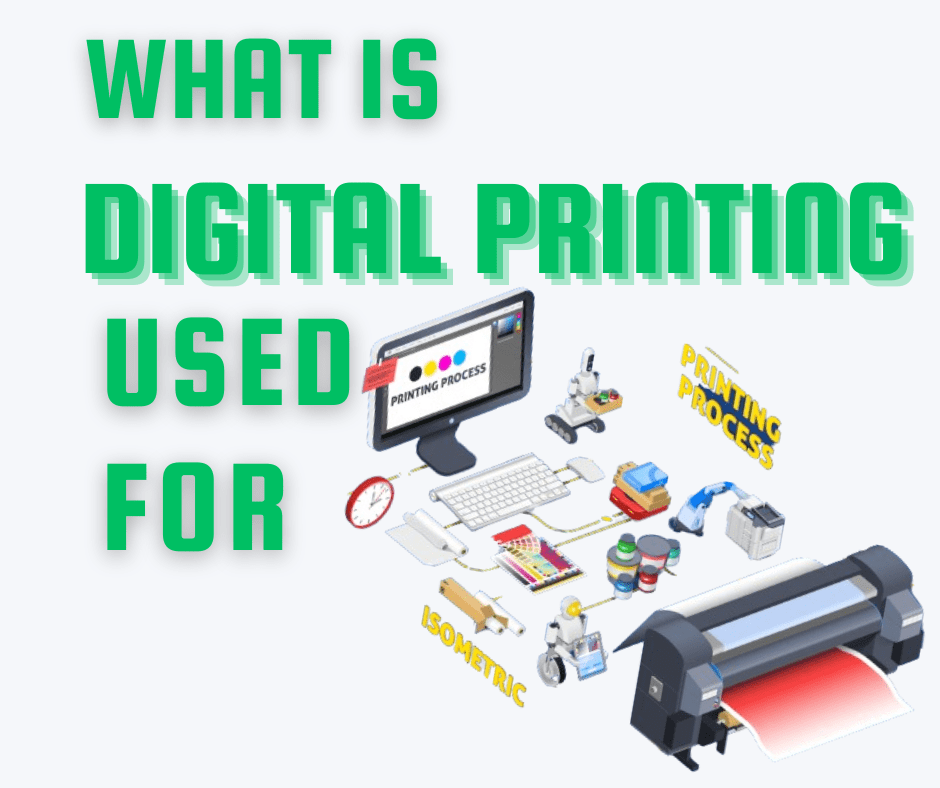In the dynamic world of printing technologies, digital printing has emerged as a game-changer. From personalized marketing materials to intricate 3D printing, this versatile technology has found its place in various industries. Let’s dive into the world of digital printing, exploring its applications, advantages, challenges, and future trends.
A. Definition of Digital Printing
Digital printing refers to the method of reproducing digital images on physical surfaces, eliminating the need for traditional printing plates. Unlike conventional methods, digital printing directly translates digital files into printed materials.
B. Evolution of Printing Technologies
The journey from traditional printing to digital methods showcases the industry’s constant innovation. Digital printing has become a cornerstone of modern printing, offering efficiency and flexibility.
II. Types of Digital Printing
A. Inkjet Printing
Inkjet printing involves propelling droplets of ink onto paper or other substrates. It’s widely used for producing high-quality images with vivid colors.
B. Laser Printing
Laser printing uses electrostatic charges to apply toner to a surface. It’s known for its precision and speed, making it ideal for office documents.
C. Direct to Garment Printing
This method is specialized for printing on textiles, allowing intricate designs on apparel with vibrant colors.
D. 3D Printing
Digital printing has even transcended into the three-dimensional realm, enabling the creation of physical objects layer by layer.
III. Advantages of Digital Printing
A. Customization
One of the major perks of digital printing is its ability to customize each print job. Whether it’s personalized marketing materials or unique apparel designs, digital printing allows for individualization.
B. Cost-Effective
Digital printing eliminates the need for traditional printing plates, reducing setup costs. This makes it a cost-effective solution for short print runs.
C. Quick Turnaround
With no need for lengthy setup processes, digital printing offers quick turnaround times. This is crucial for businesses requiring rapid production.
D. High-Quality Output
Digital printing consistently delivers high-quality prints, ensuring sharp images and accurate color reproduction.
IV. Applications of Digital Printing
A. Marketing Materials
Businesses leverage digital printing to create eye-catching brochures, business cards, and promotional materials with dynamic designs.
B. Textiles and Apparel
From custom t-shirts to intricately designed fabrics, digital printing revolutionizes the textile industry.
C. Packaging Industry
Custom packaging solutions are made possible with digital printing, allowing for unique designs and branding.
D. Personalized Products
The era of personalized products, from phone cases to home décor, owes much to the capabilities of digital printing.
V. Environmental Impact
A. Reduced Waste
Digital printing minimizes waste by eliminating the need for printing plates and reducing setup materials.
B. Sustainable Practices
Some digital printing technologies incorporate eco-friendly practices, contributing to a more sustainable printing industry.
VI. Challenges and Solutions
A. Initial Costs
While digital printing can have higher upfront costs, the benefits of customization and lower per-unit costs often outweigh the initial investment.
B. Maintenance and upkeep
Regular maintenance is essential, but advancements in technology have simplified upkeep, making digital printers more user-friendly.
C. Color Accuracy
Ensuring color accuracy remains a challenge, but ongoing developments in color management tools address this concern.
VII. Future Trends in Digital Printing
A. Nanography
Nanographic printing involves ultra-small ink particles, enhancing print quality and color vibrancy.
B. Smart Printing
The integration of smart technologies in printing, such as IoT connectivity, is set to revolutionize the industry.
C. 4D Printing
The evolution from 3D to 4D printing introduces dynamic, shape-changing objects, expanding the possibilities of digital printing.
VIII. Digital Printing vs. Traditional Printing
A. Flexibility
Digital printing offers unparalleled flexibility, allowing for on-the-fly changes and customization, a feat traditional methods struggle to match.
B. Speed
The quick setup and production times of digital printing make it a faster alternative to traditional printing methods.
C. Cost Comparison
While traditional printing may have lower per-unit costs for large runs, digital printing shines in cost-effectiveness for shorter print quantities.
IX. How to Choose the Right Digital Printing Technology
A. Project Requirements
Understanding the specific needs of a project helps in selecting the most suitable digital printing technology.
B. Budget Considerations
Balancing project requirements with budget constraints ensures a cost-effective and efficient printing solution.
C. Long-Term Goals
Considering future printing needs helps in investing wisely in digital printing technology.
X. Case Studies
A. Success Stories in Various Industries
Exploring real-world examples showcases the impact of digital printing across diverse sectors.
XI. Expert Insights
A. Interviews with Industry Professionals
Gaining insights from experts in the field sheds light on the nuances and potential advancements in digital printing.
XII. Tips for Successful Digital Printing Projects
A. File Preparation
Properly preparing digital files ensures optimal print quality and minimizes errors.
B. Communication with Printers
Clear communication with printing professionals helps in achieving the desired results.
C. Quality Control
Implementing rigorous quality control measures ensures consistently excellent prints.


1 Comment
Наша ежедневная лента новостей даст возможность вам всегда быть информированными на тему последних новостей.
https://pitersk.ru/articles/2024-08-20-7-ocharovatelnyh-lukov-s-tsvetochnymi-platyami-zimmermann/